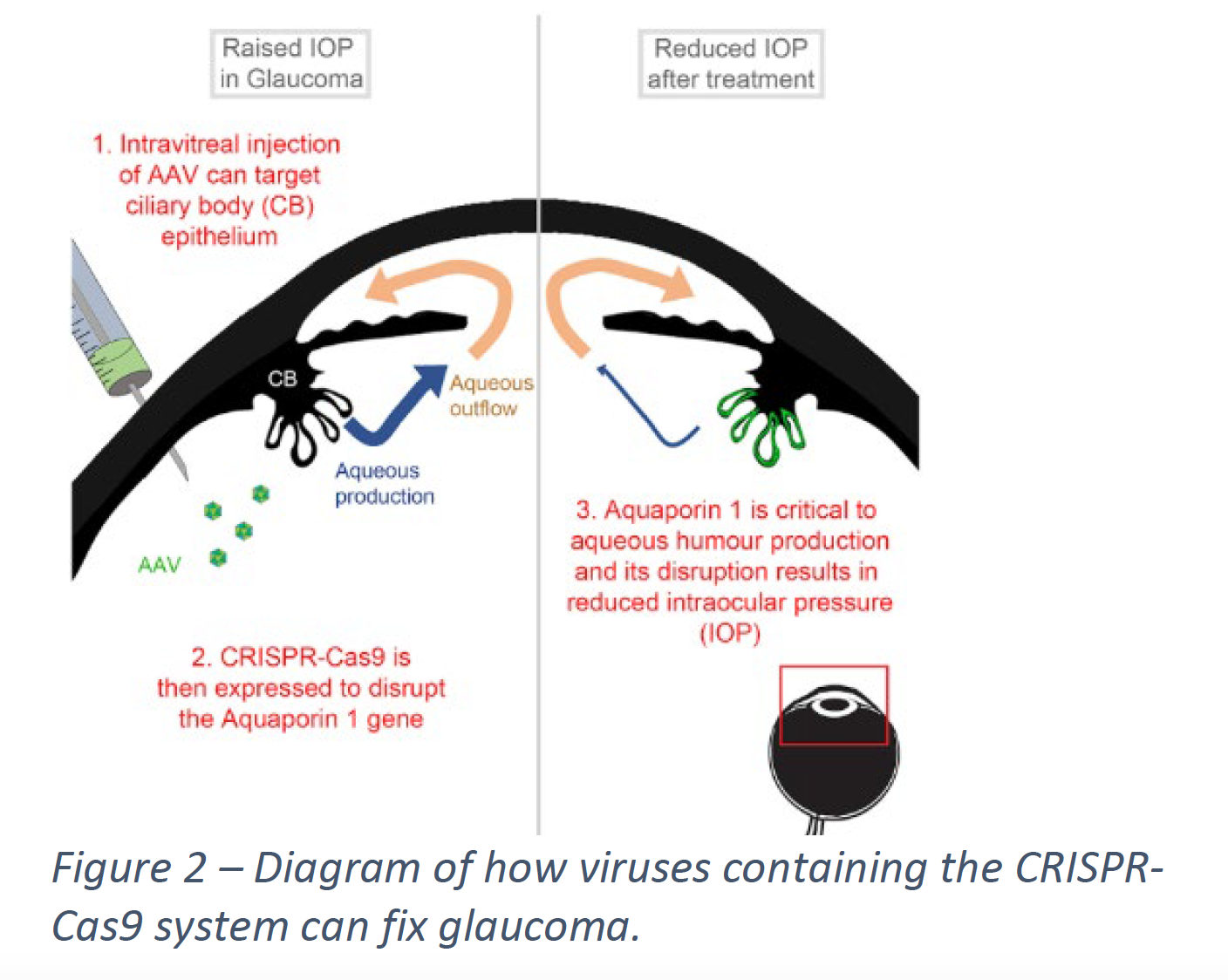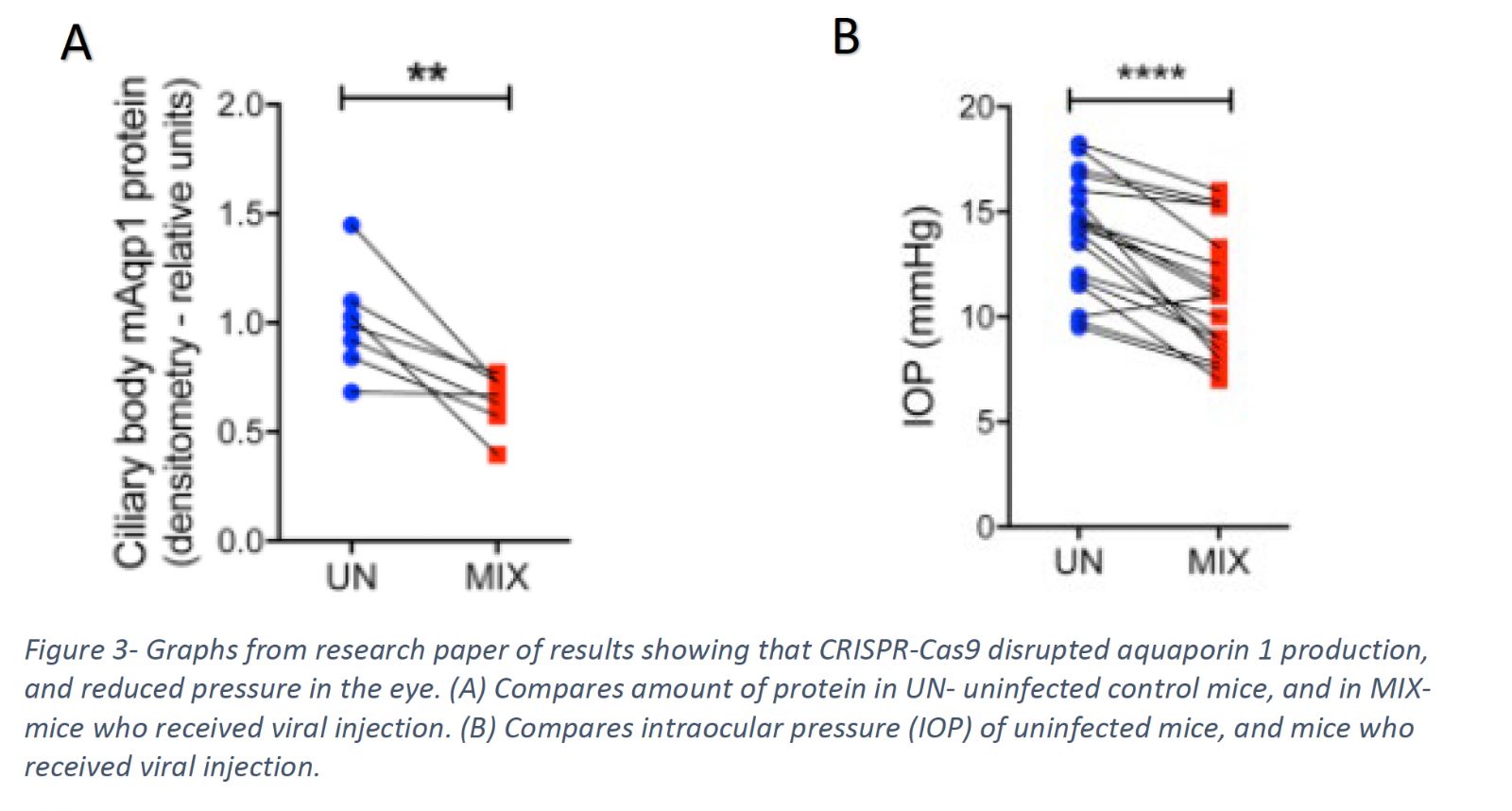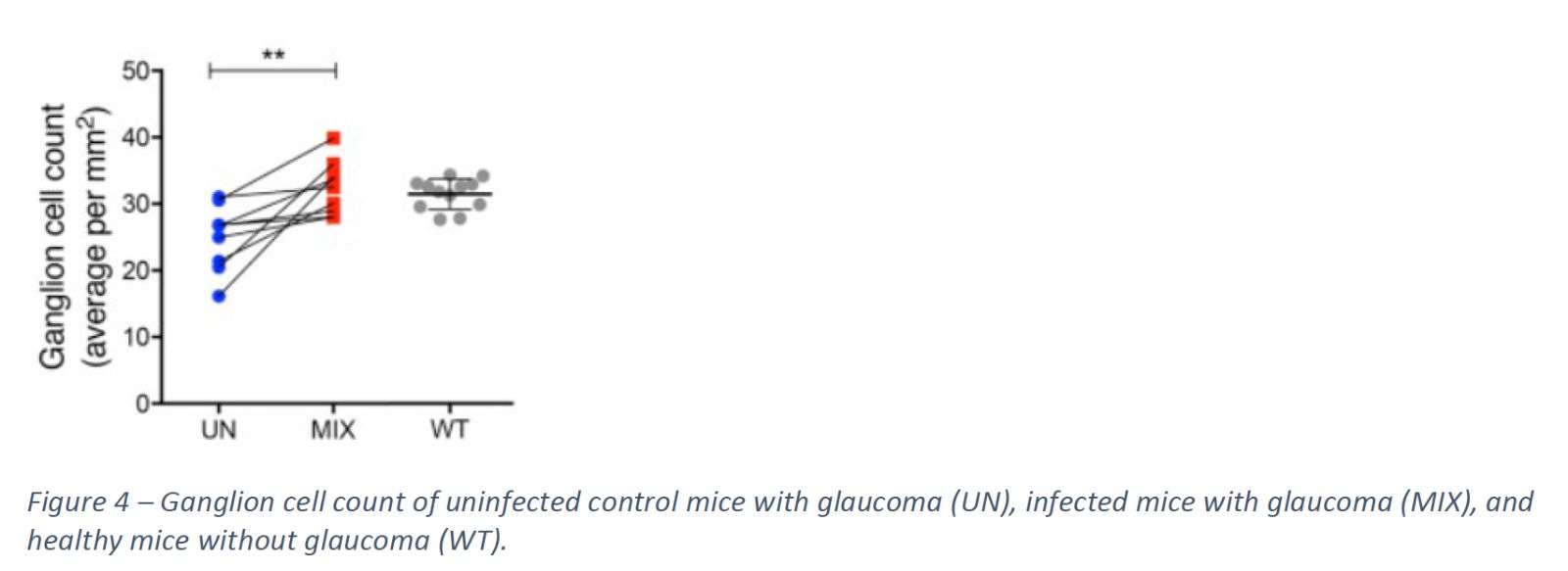News
Could It Be A One-Stop Solution For The Most Common Cause Of Irreversible Blindness?
By Vered Smith
Glaucoma is a condition that affects approximately 70 million people worldwide1, –a number greater than all the people living in the U. K2. But scientists led by Jiahui Wu from the University of Bristol, have come up with a unique idea. Can they combine the natural power of viruses - which we know all too well – with the man-made power of gene editing to prevent lost sight with one injection?
Glaucoma causes problems with vision, and over time deteriorates into blindness. Normally the eye is filled with a precisely regulated amount of fluid. With glaucoma, there is too much fluid in the eye, and pressure increases, almost like a river trapped behind a dam (see figure 13). This causes some cells (known as ganglion cells) to die, damaging the optic nerve, and affecting sight. Conventional studies have focused on releasing the pressure by unblocking the drainage canal, similar to trying to open the dam slightly. Or, they have focused on reducing the fluid produced at the start of the process, similar to causing the water source behind the dam to lessen. However, there are issues with these treatments, and sight loss could still occur.

In a study published in Molecular Therapy on March 4th 20204, a group of scientists led by the University of Bristol revealed a way to potentially cure glaucoma that had been tested on mice and human tissues - deforming one type of water channel of specific cells in the eye. A water channel does what it says: it’s a protein that channels water into and out of a cell. Closing this channel would be similar to blocking a stream that leads into a river, so that water can’t get through. This reduces the volume of water, no matter what the cause of the excess water is. If proven safe, this would mean that this therapy could cure many different types of glaucoma with one injection.
But how did they deform the channel?
The researchers tested gene therapy with a twist. They injected into mice’s eyes a virus (specifically an adeno-associated virus) in order to deliver a gene editing (CRISPR-Cas9) system to a gene unrelated to the problem. One of the water channels of the cells in the ciliary body (the area of the eye where part of the fluid is produced) is known as aquaporin 1. The CRISPR-Cas9 system was meant to prevent this protein being produced by the cell (see figure 2).

The scientists first injected it into mice with healthy eyes. Over three weeks, they monitored the experiment to see if this would be effective, and if any harmful side effects would transpire. At the end of this time, they removed the ciliary body. They found that the protein (aquaporin 1) was produced less (see figure 3a), and this had also significantly lowered the pressure in the eye (see figure 3b).

In almost all of the mice, they found no concerning side effects in the ciliary body, or in any other areas of the eye.
Wu and his team then used steroids to model glaucoma in mice, and injected them with the same virus they gave the healthy mice. This reduced the pressure and aquaporin 1 production by 20%. They also used microbeads to model a more extreme form of glaucoma; very high pressure in the eye, and ganglion cell death. One week after this treatment, there was already a noticeable decrease in pressure and aquaporin 1 production. After seven weeks, it also prevented the ganglion cells from dying (see figure 4). As the ultimate aim of glaucoma treatment, this is a clear victory.

The last step in their experiment was to see if the virus would work effectively in human eyes. To this end, they used ciliary bodies from post mortem donors. The scientists successfully detected that the virus could target and edit the process producing the protein from the gene in human tissue.
As mentioned, the issue at the moment is that there is no satisfactory treatment option for glaucoma. Despite it being a chronic, common, well-researched cause for blindness, the current options lead to side effects, and don’t always prevent full loss of sight. If successful as a treatment, this therapy could remove a person’s glaucoma with one injection.
Steps still need to be covered to get to clinical trials in patients; such as injecting larger animals, and seeing the effects on them. However, as Andras M Komáromy writes, this is ‘very promising’5. It is an incredible way of reigning in the strength nature has, and merging it with modern science to heal those who are suffering.
References
- H.A. Quigley, A.T. Broman. The number of people with glaucoma worldwide in 2010 and 2020. The British Journal of Ophthalmology. 2006 Mar.; 90 (3): 262-7
- Worldometer.com. United Kingdom Demographics [Internet]. 2020 [12 June]. Available from: https://www.worldometers.info/demographics/uk-demographics/
- Misty Kearney. January: National Glaucoma Awareness Month – January 11 2019 – West Georgia Eye Care [Internet]. 2019 [12 June]. Available from: https://www.wgecc.com/january-national-glaucoma-awareness-month/
- Wu, J. et al. Gene Therapy for glaucoma by ciliary body aquaporin 1 disruption using CRISPRCas9. Molecular Therapy. 2020 Mar. 4; 28 (3): 820-829
- A. M. Komáromy. CRISPR-Cas9 Disruption of Aquaporin 1: An Alternative to Glaucoma Eye Drop Therapy? Molecular Therapy. 2020 Mar. 4; 28 (3): 706-708 1